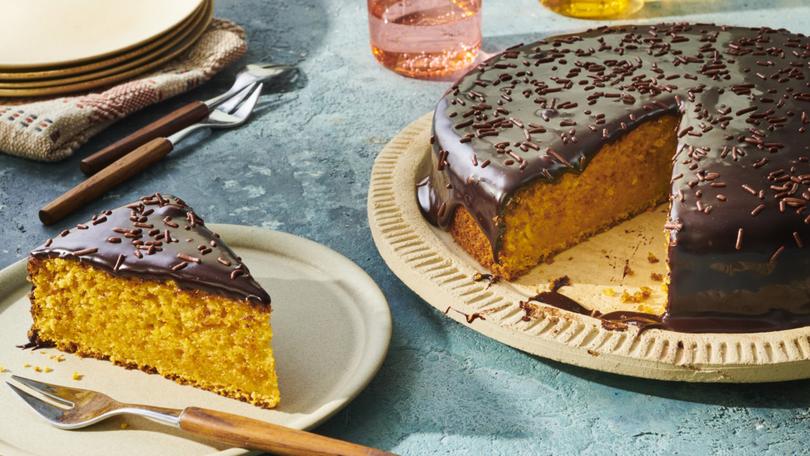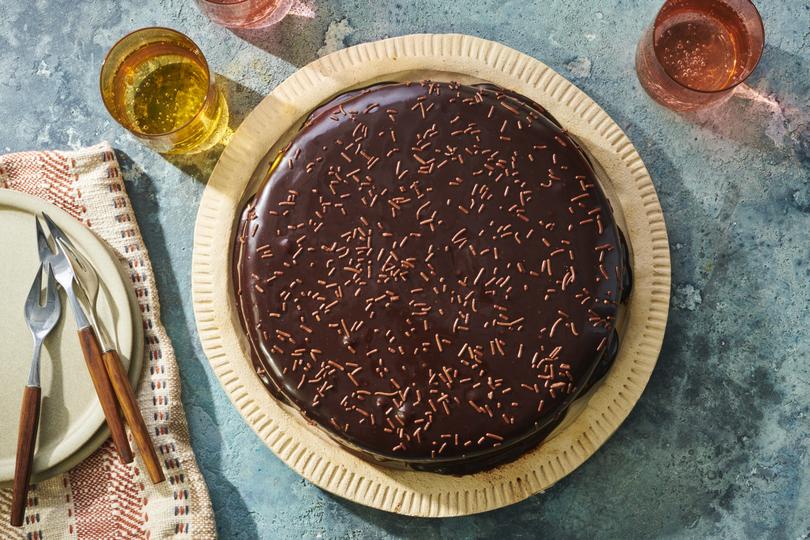The New York Times: This carrot cake doesn’t require any grating (really!)

When I set out to make bolo de cenoura, a carrot cake found in Portuguese and Brazilian cuisines, I wanted to re-create what I’d had at bakeries or seen on Instagram: perfectly plated slices in vivid contrasting colors, an orange-amber crumb under a dark chocolate glaze.
Often made at home in a blender or food processor and sold at traditional bakeries, bolo de cenoura comes together with just five key ingredients: carrots, flour, sugar, eggs and oil. For celebrations, the Brazilian version is usually topped with a semi-glossy chocolate frosting called brigadeiro that’s anchored by condensed milk and cocoa powder. It adds more than just a little sweetness: It turns a bright, starch-forward cake into a rich dessert.
It was all so simple. And yet, I found myself thinking about how I wanted to modify this carrot cake, which was quickly becoming my favorite on earth.
Sign up to The Nightly's newsletters.
Get the first look at the digital newspaper, curated daily stories and breaking headlines delivered to your inbox.
By continuing you agree to our Terms and Privacy Policy.Whenever I adapt recipes, I try to ensure that each tweak reveals something about me, that it allows a little of my personality to peek through. So I’ll add an ingredient that excites my palate, preference masquerading as personal touch. Sometimes I make a substitution because I sense a connection with a different dish rooted in similar ingredients. These adaptations end up helping me learn the boundaries of a recipe, what modifications it can take. But they also illustrate the food memories I’m always chasing — feelings I keep coming back to, flavors that make me feel at home.
Mariana Vieira, a professional baker from Bauru, Brazil, and a co-owner of Brigadeiro Bakery in New York, makes no modifications to her classic bolo de cenoura.
“It’s very homemade, and it’s not a fancy cake,” Vieira said. (At the bakery, she makes it only in single batches.)
The steps are straightforward: Gather your ingredients, purée in the blender, pour in a prepared pan and bake. Then, make the brigadeiro while the cake cools.
The carrots can be peeled or just scrubbed. The most important thing, Vieira says, is that “they should be very crispy,” in order to make the cake moist and ensure a soft crumble with every pass of a ravenous diner’s fork.
Although I love the classic version, I sneaked in a few changes to suit my taste. I folded a spoonful of sour cream into the batter for a delightful tang, and used sweetened condensed coconut milk in the brigadeiro frosting for a creamy coconut-flavored topping that coats every bite.
That hint of coconut reminds me of the sweet afternoon snacks of my childhood in Lagos, Nigeria: a small bag of coconut caramels, chuk chuk (a freshly grated coconut tossed in a pale golden caramel) or gurudi (a brittle cracker of coconut and cassava), a little burst of joy picked up on the way home from school, sometimes followed by a kanjika, a cold corn-coconut pudding finished with nutmeg. This version of brigadeiro brings me right back.
And just as those coconut-infused treats were there for me, this cake is there for Vieira’s boys, helping them build a connection to Brazil from many miles away. In their home, bolo de cenoura is served with guava jam or butter, or drizzled with a simple ganache and requested for birthdays and celebrations.
“It’s such a versatile cake,” she says. “It’s amazing.”
And, like any baked good, a subtle adjustment may be all you need to give it your own personal touch, something to remind you of home.
Bolo de Cenoura (Carrot Cake)
Recipe Yewande Komolafe
Bolo de cenauro, a carrot cake often found in Portuguese and Brazilian bakeries, is thrilling in its simplicity. A few key ingredients (carrots, flour, sugar, eggs and oil) and a blender or food processor are all you need to bring together the batter. The carrots give the cake its tender orange-amber crumb, which is finished with a brigadeiro frosting, anchored by a condensed milk and cocoa powder, that’s made while the cake cools. A spoonful of sour cream, a nontraditional addition to the batter, adds a slight tang here, and condensed coconut milk lends a subtle nuttiness to the frosting.
Ingredients:
For the cake:
2 cups/260g all-purpose (plain) flour
1 tbsp baking powder
1 tsp kosher salt (such as Diamond Crystal)
½ cup/115ml grapeseed oil or other neutral oil, such as safflower or canola, plus more for pan
2 large or 3 medium carrots (about 300g), trimmed, scrubbed and roughly chopped
1 ¼ cups/270g sugar
3 eggs, at room temperature
½ cup/112g full-fat sour cream
For the brigadeiro topping:
2 x 210g cans sweetened condensed coconut milk
5 tbsp/30g Dutch-process cocoa powder
¼ tsp kosher salt (such as Diamond Crystal)
2 tbsp chocolate sprinkles

Preparation:
Step 1 Make the cake: Heat the oven to 175C. In a medium bowl, whisk together the flour, baking powder and salt. Generously brush a 23cm round cake pan with oil.
Step 2 In a blender or food processor, finely chop the carrots by pulsing about 6-10 times until minced. Add the sugar and pulse until just combined, about 30 seconds. Add the oil and eggs all at once. Pulse until the mixture is combined and looks a bit foamy, 30 seconds. (You can also do this step without a blender or food processor: Grate the carrots into a medium bowl using the fine side of a box grater. Add the sugar, eggs and oil, and use a whisk to combine.)
Step 3 Pour the wet mixture into the dry ingredients, and, using a whisk, mix until just combined. Gently mix in the sour cream and pour the mixture into the prepared cake pan. Bake until the sides pull away slightly from the edge of the tin and a toothpick inserted into the centre comes out clean, about 45-50 minutes.
Step 4 Move the cake to a baking rack set in a sheet pan and let it cool slightly in the pan, about 10 minutes. Invert the cake onto the baking rack and let cool completely.
Step 5 While the cake cools, make the brigadeiro topping: In a small saucepan, combine the sweetened condensed coconut milk, cocoa powder and salt. Stir with a whisk over medium-low heat until the cocoa powder is fully incorporated. Increase heat to medium and simmer, stirring frequently, until the mixture forms large bubbles and thickens, about 12-15 minutes. It should fully coat a heatproof rubber spatula and drizzle off in a slow stream. Remove from heat and allow the topping to cool completely, stirring frequently to prevent a skin forming on top, and until the brigadeiro topping streaks when stirred and is thick and fudgy, about 25-30 minutes.
Step 6 Spread the cooled topping over the cake, swirling the topping over the centre and allowing it to drip over the edge. Let it set slightly, about 10 minutes, then shower a handful of chocolate sprinkles over the top. Cut the cake in wedges to serve.
SERVES 12
Total time: 1 hour 30 minutes, plus cooling
This article originally appeared in The New York Times.
© 2024 The New York Times Company
